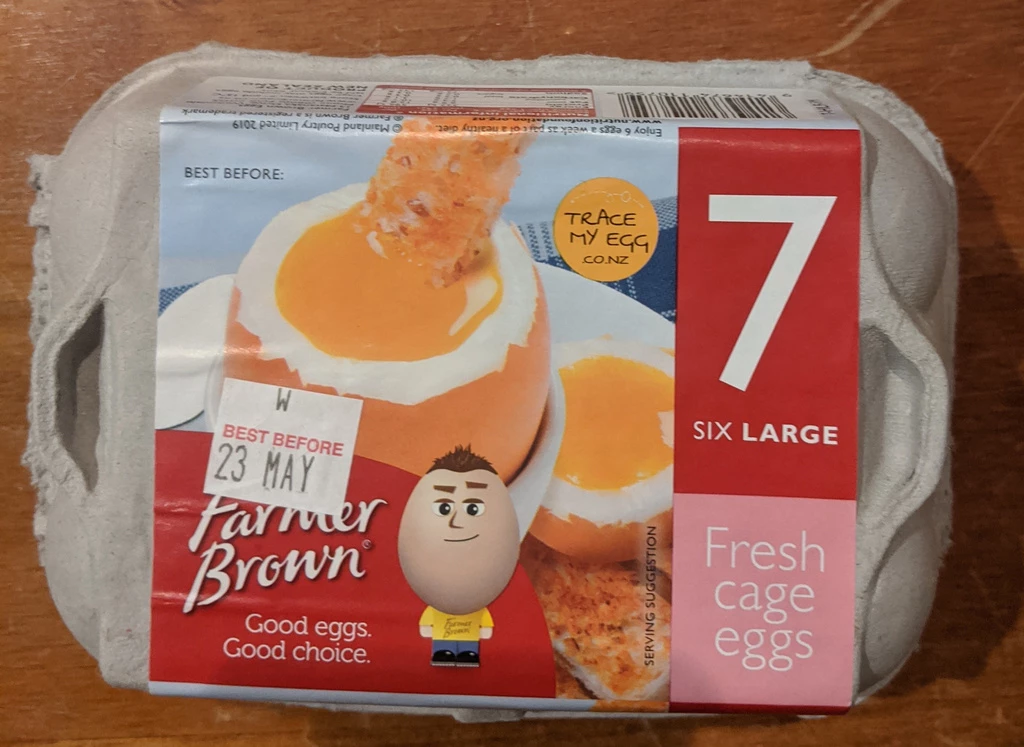It’s not just climbing routes that are graded differently in NZ vs the rest of the world. Let’s talk about eggs.
There’s no way that there can be 7 eggs in that carton!
It turns out that prominent number 7 is the size of the egg, not the number of eggs. Wikipedia has good information on egg sizes internationally, though the Egg Farmers of Alberta differ slightly. Here’s my quick summary.
| NZ | New Zealand | Canada | United States | Can/US |
|---|---|---|---|---|
| 8 (Jumbo) | 68g | 70g | 70.9g | Jumbo |
| 7 (Large) | 62g | 63g | 63.8g | XL |
| 56g | 56.8g | L | ||
| 6 (Standard) | 53g | |||
| 49g | 49.6g | M | ||
| 5 (Medium) | 44g | 42g | 42.5g | S |
| 4 (Pullet) | 35g | < 42g | 35.4g | Peewee |
Allegedly there are traditional NZ sizes as well, where 0 is biggest and 7 is smallest, at useful 5g ranges. Apparently they didn’t need all those sizes.
US eggs are less than 1g heavier than Canadian eggs. The table I’ve put above doesn’t show ounces, but what we have here is that the US sizes are in ounces, and then I’ve shown grams; the Canadian numbers round down the number of grams to the nearest integer.
The NZ numbers are just different. At the same size, Canadian eggs are 1-2g heavier than NZ eggs. However, large in NZ is extra-large in Canada and the US. NZ Standard is between L and M. And pullet is a number in NZ corresponding to peewee in US, while peewee is just “smaller than medium” in Canada.
Australia is completely different. (See, Australia and NZ are different countries).
